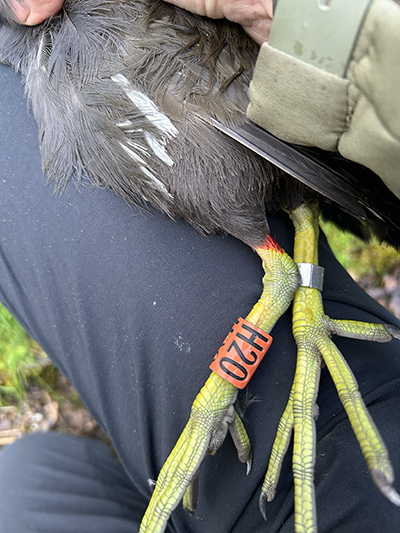Moorhens are a common site both in the countryside and in urban areas but little is known about their movements. British birds are generally sedentary but the population is increased with winter visitors from the continent. Very few Moorhens are caught and ringed in the UK and recent declines mean they are on the amber list for birds of conservation concern.
In 2022 a national project was started aimed at colour ringing Moorhens to try and find out more about their movements and survival. I became involved through contact with Aurora Gonzalo Tarodo who is co-ordinating the scheme and recently took delivery of a string of orange colour rings each with a unique alpha numerical code!
See link here for more details of the project and other Waterbird Marking Scheme projects. I became involved as we are lucky enough to have several sites nearby where Moorhens could potentially be easily caught. One of these sites is Grovesnor park and with permission granted I waited patiently for a decent spell of weather before attempting to catch a pair frequenting the pond.
Being used to people they were easy enough to catch and within 20 minutes I'd caught and processed the resident pair. Moorhens can be sexed according to the relationship between wing length and tarsus and toe length. The birds I caught were obviously a pair and the biometrics bore this out.
H20 was the male with a longer wing and longer tarsus and toe whilst H21 was a smaller female. Both birds were easily caught using a wader spring trap baited with grain.
| Moorhen biometrics | |||
| Wing | Tarsus / Toe | Weight | |
| H20 | 230 mm | 136 mm | 420g |
| H21 | 201mm | 118 mm | 360g |






























































No comments :
Post a Comment